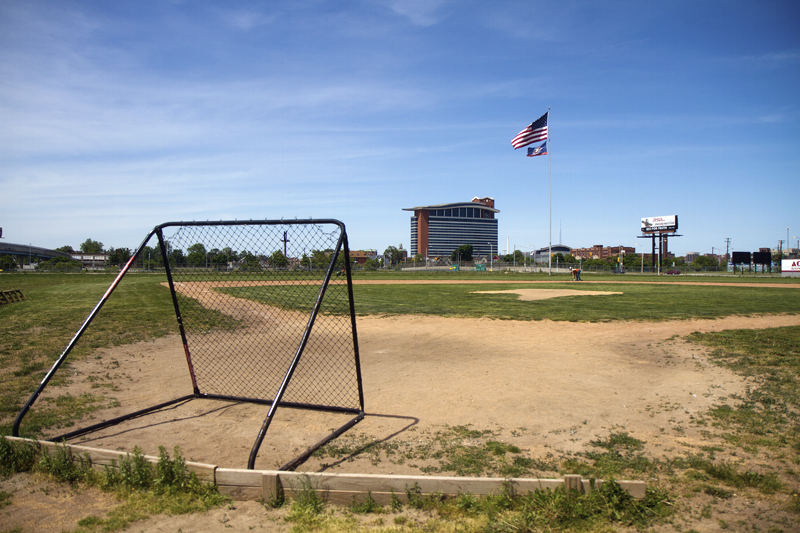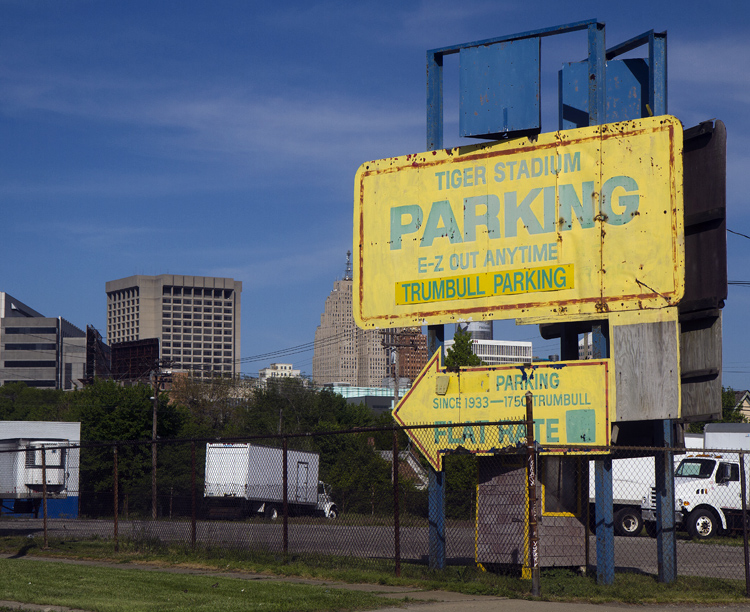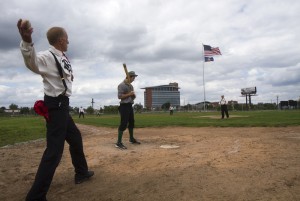
By Michael Betzold
Guest columnist
It’s time for those who want to keep natural grass at Michigan and Trumbull to put their money where their mouth is.
All they need to do is raise $100,000 a year and give it to the Police Athletic League, whose plan for a youth sports facility at the site of the old Tiger Stadium has been green-lighted by city council.
So far, opponents of PAL’s plan to install synthetic turf at the Corner have been understandably reluctant to question PAL’s intentions. How do you argue against city kids playing sports there? You can’t.
Leaders of the Old Tiger Stadium Conservancy have been privately whining about how they never expected PAL to opt for carpet when they first made the deal. Members of the Navin Field Grounds Crew have raised good arguments about the health hazards of turf fields – and PAL CEO Tim Richey has now agreed not to use crumbed tire infill, which has been called a possible carcinogen in several recent national reports. Instead, he says PAL will install some other sort of synthetic turf.
Corktown residents and merchants want access to the field, which – thanks to the unauthorized mowing and grooming by the all-volunteer Navin Field Grounds Crew – has been theirs to play on for the last six summers. So Richey agreed at a Detroit City Council meeting to guarantee 15 hours of public access per week – but didn’t say it would be free, or even during daylight hours.

Throughout recent public meetings, Richey has insisted that synthetic turf is necessary to support the intensive programming PAL plans for what it’s touting as a showcase facility for youth sports. He made the same assertion Thursday morning on WJR’s Frank Beckman show in an interview with substitute host ML Elrick. Until now, no one’s been able to challenge him on that point.
Critics have questioned PAL for over-programming the site. But that’s played right into PAL’s hands. While the matter was before city council, PAL issued a plea to its supporters to come out in force against the nefarious folks who were trying to keep city kids off the historic field for “thousands of hours a year.” Ouch.
Since Richey has insisted the health and safety of its young athletes is PAL’s top priority, his insistence on carpet has been puzzling. Even the “alternative” brands he’s opting for now— which have surfaced in recent years after communities across the country have balked at their kids playing on crumbed tires—have not been proven safe.
Richey has maintained all along that PAL has done systematic research to support its conclusion that turf is safe. When I asked to see that research, what Richey provided was highly selective – mostly supplied by turf manufacturers and FIFA, the corrupt world soccer governing body that has been pushing turf fields.
The experience of people who’ve run intensive sports programs on natural grass, notably Deb Sumner of the Clark Park Coalition, proves Richey wrong – but to no avail, since apparently the deal to develop the Corner was already done in the back rooms of city hall.
When pressed, Richey has said something about rain and muddy fields and cited “a top turf expert” at MSU who backs up his assertion that they need a synthetic surface to withstand the amount of programming they plan, including football, soccer, lacrosse, and other events like “movie nights,” and, oh yes, baseball.
At the Corktown community meeting on Oct. 28, Richey distributed a list of “talking points” that included a quote from that expert, MSU turf management professor John Rogers, asserting “I do believe synthetic turf … is the best option” for the PAL project.

I’ll be charitable and call that quote intellectually dishonest rather than an outright lie. It’s what we journalists would call cherry picking.
You see, I talked to Richey’s expert two weeks ago. And far from backing up Richey’s assertion that he’s on PAL’s side in this, John Rogers made it crystal clear he’s not.
Rogers told me he is so opposed to artificial turf he refuses even to research it. He went on to say: “The decision to use artificial turf is always made by people who will never spend one minute on the field. If they were out there and the surface was 140 degrees, they might not like it so much. If they were out there and banged their knee on the field, they might not like it so much.”
Some months ago, Richey asked Rogers to give his expert opinion on what surface would work with PAL’s plan to program the field for six to ten hours a day. Richey also made it clear what PAL’s budget for maintenance would be.
Rogers explained to me that proper maintenance of a natural grass field requires a real professional, and PAL didn’t have that expertise nor was it allocating nearly the amount of resources needed to hire a pro groundskeeper. Rogers couldn’t recall the exact maintenance figure in the PAL budget but scoffed that it was “less than six figures a year.” So Rogers had no choice but to write back to PAL that, given its budget and programming, they would have to use synthetic turf – because it doesn’t take much money to hire someone who can sweep off a carpet.
I asked Rogers if PAL could do the programming it wants on a natural grass field at Michigan and Trumbull, and he said absolutely yes if it allocated a proper amount to maintenance. Then he laid out the kind of budget it would take, and it was about $100,000 more annually than PAL had told him it wanted to spend.
This might explain why Richey told me that PAL considers the costs of grass versus turf “a wash” – even though an artificial turf field costs about a million dollars to install and needs to be replaced after ten years. Maintaining grass would cost that same million dollars more over a decade, using Rogers’ estimates. But it’s clearly a choice PAL is making on how it’s allocating the money.
Questioning PAL’s programming or public access plans does little good now. PAL has been given the keys to the car. The conservancy has agreed to award PAL the $3 million left from a 2009 earmark Sen. Carl Levin obtained to redevelop and preserve the Corner “as a public park” – though it arguably isn’t really that. Last week city council unanimously approved the land transfer that starts the project in motion.
PAL can program the field to its liking now – if it can raise the remaining half of the money needed for its $15.5 million project. Its fundraising campaign touts the unquestionable virtues of city kids playing on the historic grounds. So far, however, it’s fallen millions short of its goal, and the recent negative publicity can’t be helping. Last week, a major corporation reportedly pulled the plug on its longtime support for PAL.
PAL’s position is so bizarre that some observers have started to question whether it’s in bed with turf manufacturers.
PAL could use some help, it seems. How about an offer it can’t plausibly refuse?
I’d bet PAL parents would like to know the real reason Tim Richey insists on a synthetic field. After all, it’s their kids who will be playing there.
I’d also wager Eric Larson would value his planned housing development on Trumbull as worth at least $100,000 a year more if it bordered a historic field with real grass.
That’s a small sum compared to the total project cost. So let’s have a campaign to raise the additional $100,000 for annual maintenance and give it to PAL – so that the young people of our city can play there on natural grass.
If PAL refuses that offer, Richey will have to give the community a real explanation for opting for artificial turf – rather than the phony one he’s been getting away with.
I’d be happy to chip in the first $100.
Michael Betzold
Michael Betzold is a former Free Press reporter and longtime area freelance journalist. He wrote Queen of Diamonds, a history of Tiger Stadium. He lives on Detroit’s east side.

7 Responses to "‘Phony’ case made for artificial turf at old Tiger Stadium field"